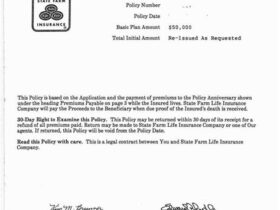For homeowners across the United States, home insurance is a critical safeguard against the financial burdens that can arise from unforeseen events. From natural disasters to theft and accidental damage, a well-chosen policy can provide invaluable peace of mind. Understanding the different types of coverage available and how they apply to your specific circumstances is the first step toward securing the right protection. This guide breaks down the essential components of home insurance in the US, helping you make informed decisions to protect your most valuable asset.
What is Home Insurance?
Home insurance, also known as homeowners insurance, is a form of property insurance that protects your house and its contents from a range of potential perils. These policies provide financial compensation if your property is damaged or destroyed by covered events. There are several standard types of coverage within a typical home insurance policy:
- Dwelling Coverage: This covers the physical structure of your home, including the walls, roof, and foundation. It is designed to help rebuild or repair your home if it’s damaged by a covered peril.
- Personal Property Coverage: This protects your belongings inside the home, such as furniture, electronics, clothing, and other personal items. It covers losses due to events like theft, fire, or vandalism.
- Liability Coverage: This protects you if someone is injured on your property and you are found legally responsible. It can cover medical expenses, legal fees, and any settlements or judgments against you.
- Additional Living Expenses (ALE): If your home is uninhabitable due to a covered loss, ALE coverage helps pay for temporary housing, meals, and other related expenses while your home is being repaired or rebuilt.
Why Do You Need Home Insurance?
While home insurance isn’t legally required in the US (unless mandated by your mortgage lender), it is highly recommended for all homeowners. The potential financial impact of not having insurance can be devastating. Here’s why home insurance is essential:
- Protection Against Disasters: Home insurance covers damage from events such as fires, hurricanes, tornadoes, and other natural disasters. The cost of repairing or rebuilding a home after such an event can be substantial.
- Coverage for Theft and Vandalism: Home insurance protects your belongings and the structure of your home against theft and vandalism.
- Liability Protection: If someone is injured on your property, you could be held liable for their medical bills and other expenses. Home insurance provides liability coverage to protect you financially.
- Mortgage Requirement: Most mortgage lenders require homeowners to maintain home insurance to protect their investment. Without it, you risk violating your mortgage terms.
- Peace of Mind: Knowing that you have financial protection against unforeseen events provides peace of mind. It allows you to focus on other aspects of your life without constantly worrying about potential disasters.
Types of Home Insurance Coverage
Understanding the different types of coverage is essential for selecting a policy that meets your needs. Home insurance policies are typically categorized by “forms,” which indicate the scope of coverage they provide. Here are some common types:
- HO-1 (Basic Form): This is the most basic type of home insurance, covering only a limited number of perils, such as fire, lightning, windstorm, hail, explosion, vandalism, and theft.
- HO-2 (Broad Form): This form covers everything in HO-1, plus additional perils like falling objects, weight of snow, ice, or sleet, and accidental discharge or overflow of water or steam.
- HO-3 (Special Form): This is the most common type of home insurance. It provides “open perils” coverage for the dwelling, meaning it covers all perils except those specifically excluded in the policy (such as flood, earthquake, and wear and tear). It typically provides named perils coverage for personal property.
- HO-5 (Comprehensive Form): This is the most comprehensive type of home insurance. It provides “open perils” coverage for both the dwelling and personal property, offering the broadest protection.
- HO-6 (Condo Form): This is designed for condominium owners. It covers personal property, as well as portions of the building that the condo owner is responsible for insuring.
- HO-8 (Modified Coverage Form): This is for older homes where the replacement cost exceeds the market value. It provides coverage based on the home’s actual cash value, rather than replacement cost.
Determining the Right Coverage Amounts

Deciding on the appropriate coverage amounts is crucial to ensure adequate protection. Here’s how to determine the right levels for each type of coverage:
- Dwelling Coverage: The dwelling coverage should be enough to rebuild your home if it’s completely destroyed. Get an estimate from a local contractor or use an online calculator to determine the replacement cost.
- Personal Property Coverage: Take an inventory of your belongings and estimate their value. Consider the cost to replace items at today’s prices. You can choose between replacement cost coverage (which pays the full cost to replace an item) and actual cash value coverage (which factors in depreciation).
- Liability Coverage: Choose a liability limit that is high enough to protect your assets in case of a lawsuit. Many experts recommend at least $300,000 to $500,000 in liability coverage.
- Additional Living Expenses (ALE): Estimate how much it would cost to live elsewhere while your home is being repaired. Consider factors like rent, meals, and transportation.
Factors Affecting Home Insurance Rates
Several factors influence your home insurance rates. Understanding these factors can help you make informed decisions and potentially lower your premiums:
- Location: Homes in areas prone to natural disasters (like hurricanes or earthquakes) or with high crime rates typically have higher insurance rates.
- Home’s Age and Construction: Older homes or those built with certain materials may be more expensive to insure.
- Coverage Amounts: Higher coverage amounts generally result in higher premiums.
- Deductible: A deductible is the amount you pay out-of-pocket before your insurance coverage kicks in. A higher deductible usually means a lower premium, but you’ll have to pay more if you file a claim.
- Claims History: If you’ve filed multiple claims in the past, your insurance rates may be higher.
- Credit Score: In many states, insurance companies use credit scores to assess risk. A lower credit score may result in higher premiums.
- Safety Features: Homes with security systems, smoke detectors, and other safety features may qualify for discounts.
Tips for Lowering Your Home Insurance Premiums

Here are several strategies you can use to lower your home insurance premiums:
- Shop Around: Get quotes from multiple insurance companies and compare their rates and coverage options.
- Increase Your Deductible: A higher deductible can significantly lower your premium.
- Bundle Your Insurance: Many insurance companies offer discounts if you bundle your home and auto insurance policies.
- Improve Home Security: Install a security system, smoke detectors, and other safety features to qualify for discounts.
- Maintain Your Home: Preventative maintenance can reduce the risk of claims and potentially lower your premiums.
- Review Your Policy Annually: Review your policy each year to ensure that your coverage amounts are still adequate and that you’re getting the best possible rate.
- Pay Annually: Paying your premium annually rather than monthly can sometimes result in a discount.
Conclusion
Choosing the right home insurance coverage involves understanding the different types of policies, assessing your specific needs, and shopping around for the best rates. While it requires some effort, the peace of mind that comes with knowing your home and belongings are protected is well worth the investment. By following the guidelines in this article, you can make informed decisions and secure a policy that provides adequate coverage at a reasonable price, protecting your financial future and ensuring the safety of your home.






Leave a Reply